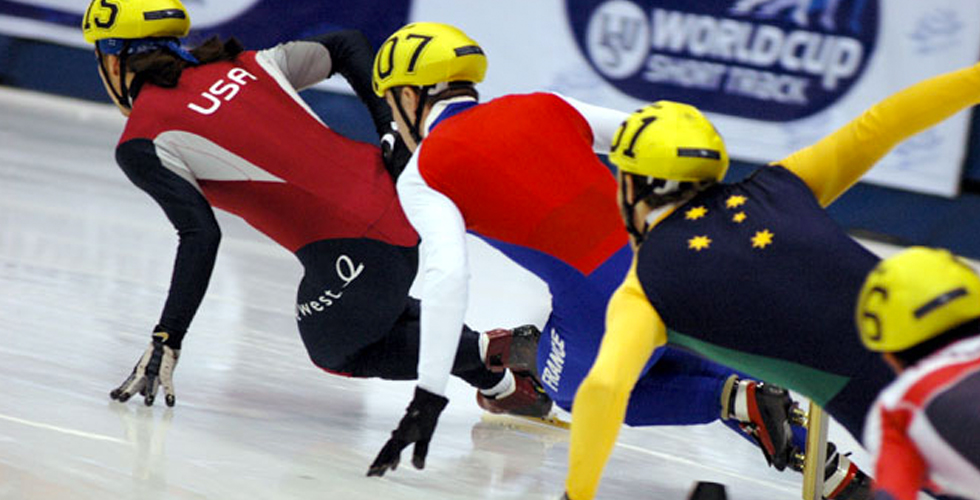Winter Olympics Science Notes: Speed Skating

(Inside Science) -- With the success of U.S. skaters such as Shani Davis and Apolo Ohno, the 2010 Vancouver Winter Olympic speed skating competitions have been full of thrilling moments.
However, viewers caught up in the drama of the telecasts might not notice the skates and the crucial features that enable the athletes to succeed. The competitions conclude with three medal events in short-track speed skating on Feb. 26 and two medal events on the long-track oval on Feb. 27.
Rocking The Bend
In short-track speed skating the entire track seems to be corners. Negotiating them at the highest possible speeds is crucial to success. The shape of the skate blades plays an important role in that effort.
The two main features of the skate shape for cornering are called the rocker and the bend. Rocker refers to the gentle arc of the bottom edge of the skate blade from heel to toe. The entire skate blade would not rest on a flat surface. Bend refers to a gentle bowing of the entire blade as it curves ever so slightly along the length of the boot.
"All sports do that, if you're going to turn a bicycle to the left, you have to lean left," said Louis Bloomfield, a physicist at the University of Virginia in Charlottesville. "In short-track they have to do it to the extreme. If they carve around in a circle, carve around in an arc, then that blade actually has to have the arc cut into it."
"If you pick your rocker and bend correctly, then it's kind of like riding on rails." said Sean Maw, a sports engineer at Mount Royal University in Alberta, Canada. "You can just glide around that corner and you're going to glide exactly on the trajectory that you want to go on."
Rocker and bend misalignments hinder cornering and make it far more difficult to follow the optimal trajectory.
Researching the effect of different rocker profiles and bends is difficult, said Maw. "The Americans, Canadians, South Koreans, Chinese, they won't tell you what their rocker profiles are because that's like one of the secrets to their success."
The Klapskate
Before the late 1990s, long-track speedskaters used a fixed blade that was fully attached to the boot of the skate. A design innovation called the klapskate added a hinge, and improved speeds by about 3-5 percent, said Maw.
"The inherent advantage of the klap over the fixed blade is that it extends the duration of the push," said Maw. The klap lies between the boot and skate blade, allowing skaters to raise the heel of their back foot during the stride without removing the blade from the ice.
Maw studied the way the klap opens while skaters travel around the track, accumulating an understanding of its exact impact on stride mechanics, effort, and performance, while also calculating the optimal stiffness of the springs that bring the blade back to the heel.
The klapskate allows skaters to change their form, extending the stride by flexing the foot and engaging the calf muscles.
"By recruiting those extra muscles you get to go faster," said Maw."It used to be bad form to push off with the toe with a fixed blade."

